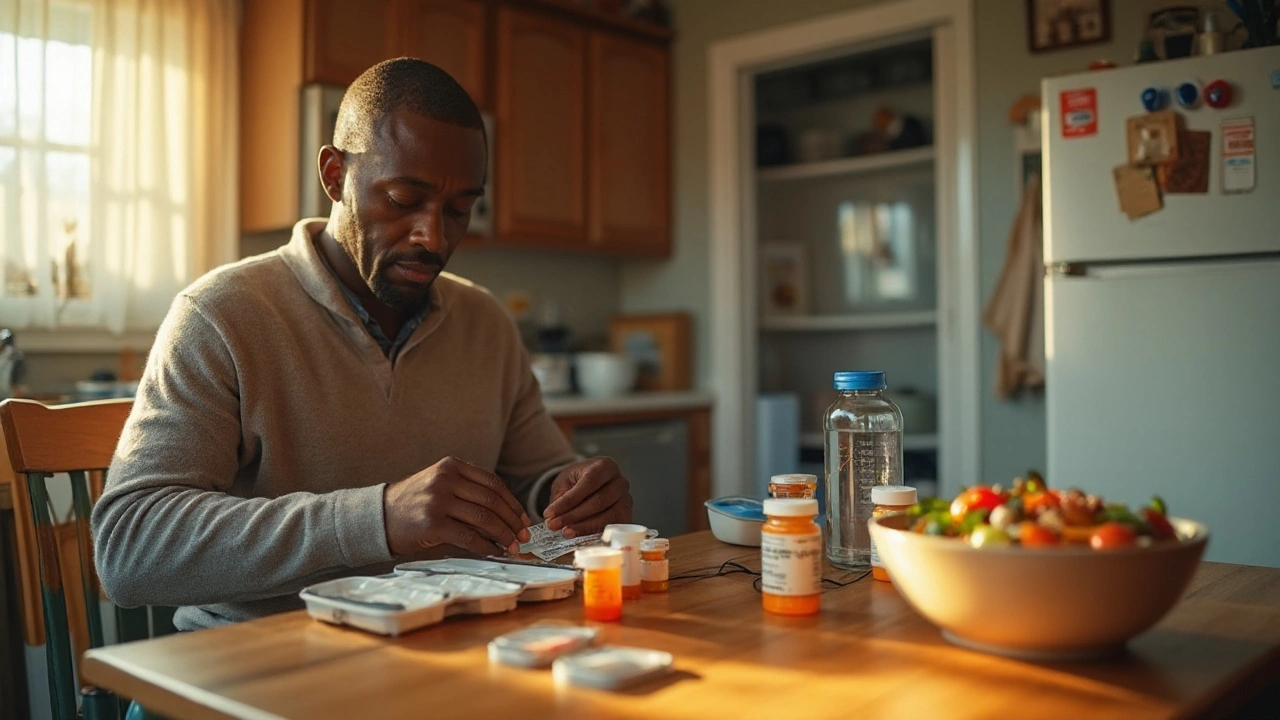Kidney Disease: What It Is, How It Shows Up, and Ways to Deal With It
If you’ve heard the term “kidney disease” and aren’t sure what it really means, you’re not alone. The kidneys filter waste, balance fluids, and keep blood pressure steady. When they start to fail, you may feel tired, notice swelling, or have changes in your bathroom routine. Spotting these clues early can stop a small problem from becoming a big one.
Symptoms & Signs You Shouldn't Ignore
Most people think kidney trouble only shows up with pain, but that’s rarely the case. Common signs include:
- Swelling in ankles, feet, or around the eyes – fluid builds up because kidneys can’t get rid of it.
- Fatigue or feeling weak all the time – waste products make you feel drained.
- Changes in urine: foamy, darker, or more frequent trips to the bathroom.
- Persistent itching – high phosphorus levels irritate skin.
- High blood pressure that won’t settle even with meds.
If you notice a few of these, it’s time to see a doctor for simple tests like blood work and urine analysis. Early detection gives you more choices.
Treatment & Prevention Tips You Can Use Today
Kidney disease treatment depends on how far the damage has gone. For early stages, doctors focus on slowing progression:
- Control blood pressure. ACE inhibitors or ARBs are often first‑line because they protect kidneys as well as lower pressure.
- Manage diabetes. Keep blood sugar in target range; high glucose speeds up kidney damage.
- Watch your diet. Cut back on salt, limit protein to what your doctor recommends, and avoid processed foods that are high in phosphorus.
- Stay hydrated. Drink enough water but don’t overdo it if you have fluid retention issues.
If the disease advances, medication adjustments, dialysis, or even a transplant may become necessary. Those options sound scary, but many people live full lives with proper care and support.
Here are three practical steps you can start right now:
- Schedule a check‑up if you have high blood pressure, diabetes, or a family history of kidney problems.
- Read food labels – aim for less than 2,300 mg of sodium per day and watch phosphorus additives in soda, cheese, and processed meats.
- Keep a simple log of how often you urinate and any swelling; it helps doctors see patterns faster.
Kidney disease isn’t something you can ignore, but with the right info and habits you can keep your kidneys working longer. Use these tips as a starting point and talk to your healthcare provider about the best plan for you.
Chronic Heart Failure and Your Kidneys: Symptoms, Risks, and Care Guide
How heart failure affects your kidneys, tests to watch, meds that help or harm, diet and fluid tips, sick-day rules, and when to call your care team.
READ MOREPhosphate Salts and Your Health: Hidden Additives, Risks, and Safe Intake Guide
- DARREN LLOYD
- 16
Are phosphate salts harmless or a hidden risk? Learn where they hide, safe limits, who should cut back, and how to read labels without stress.
READ MORE

